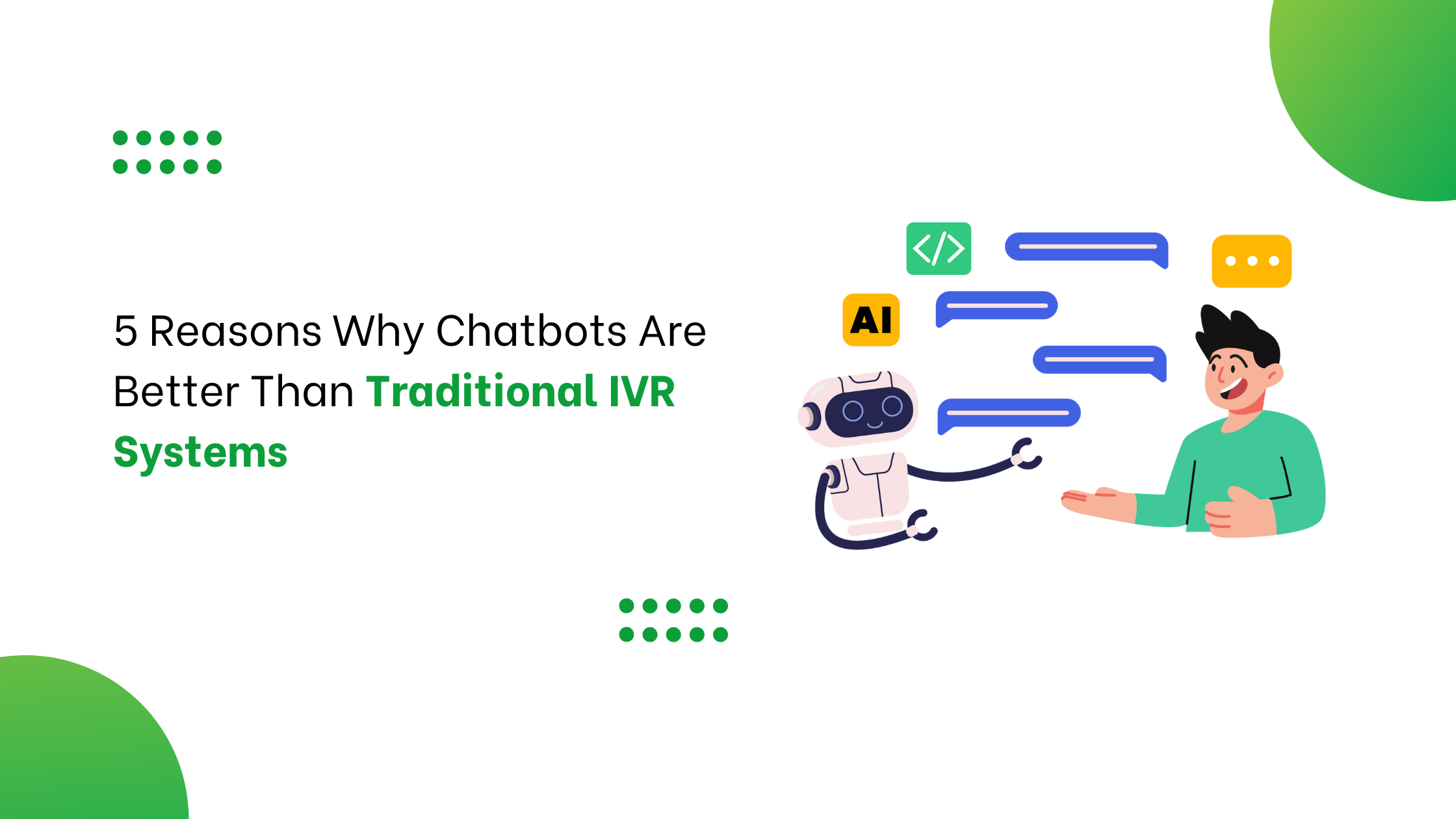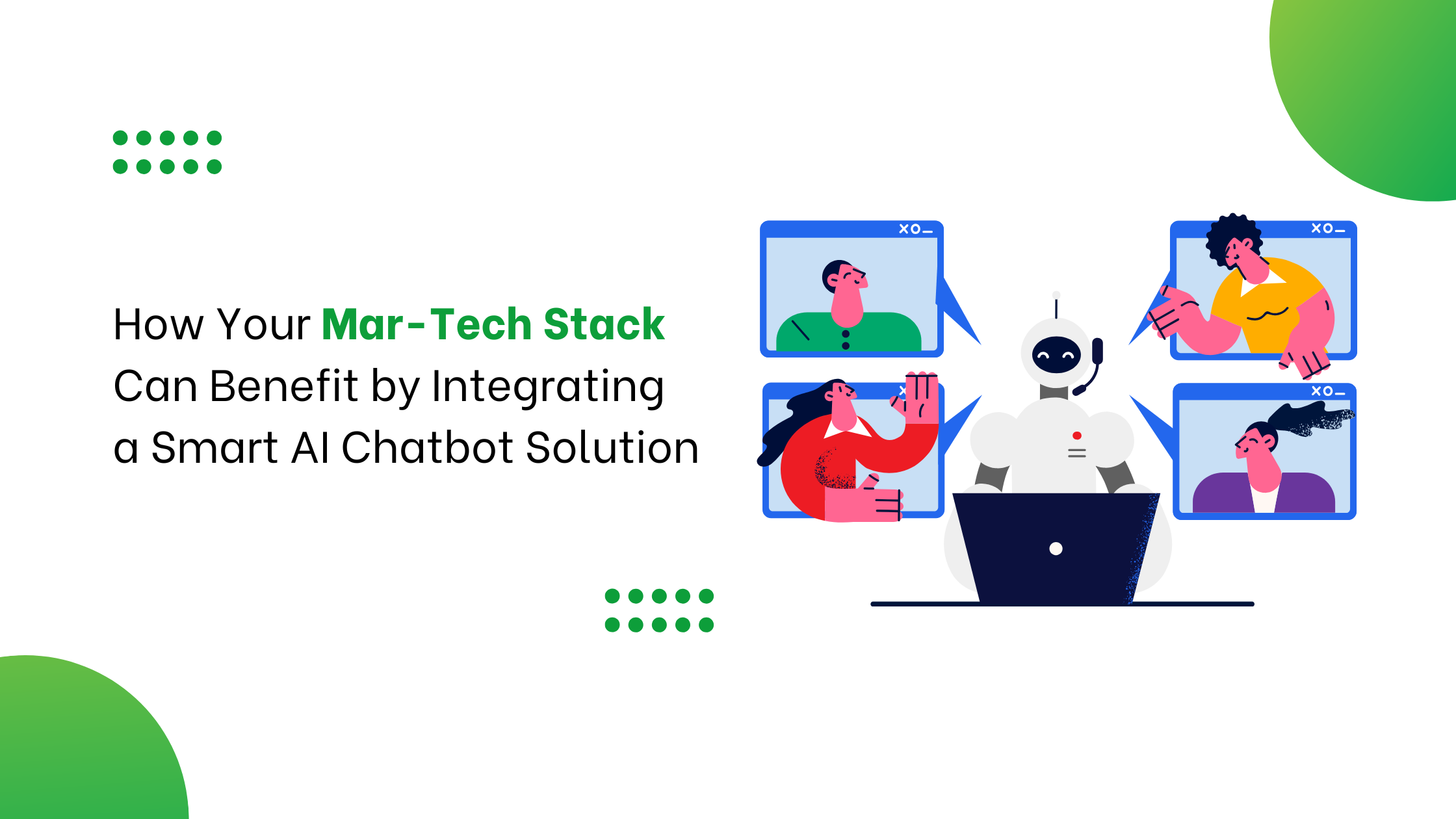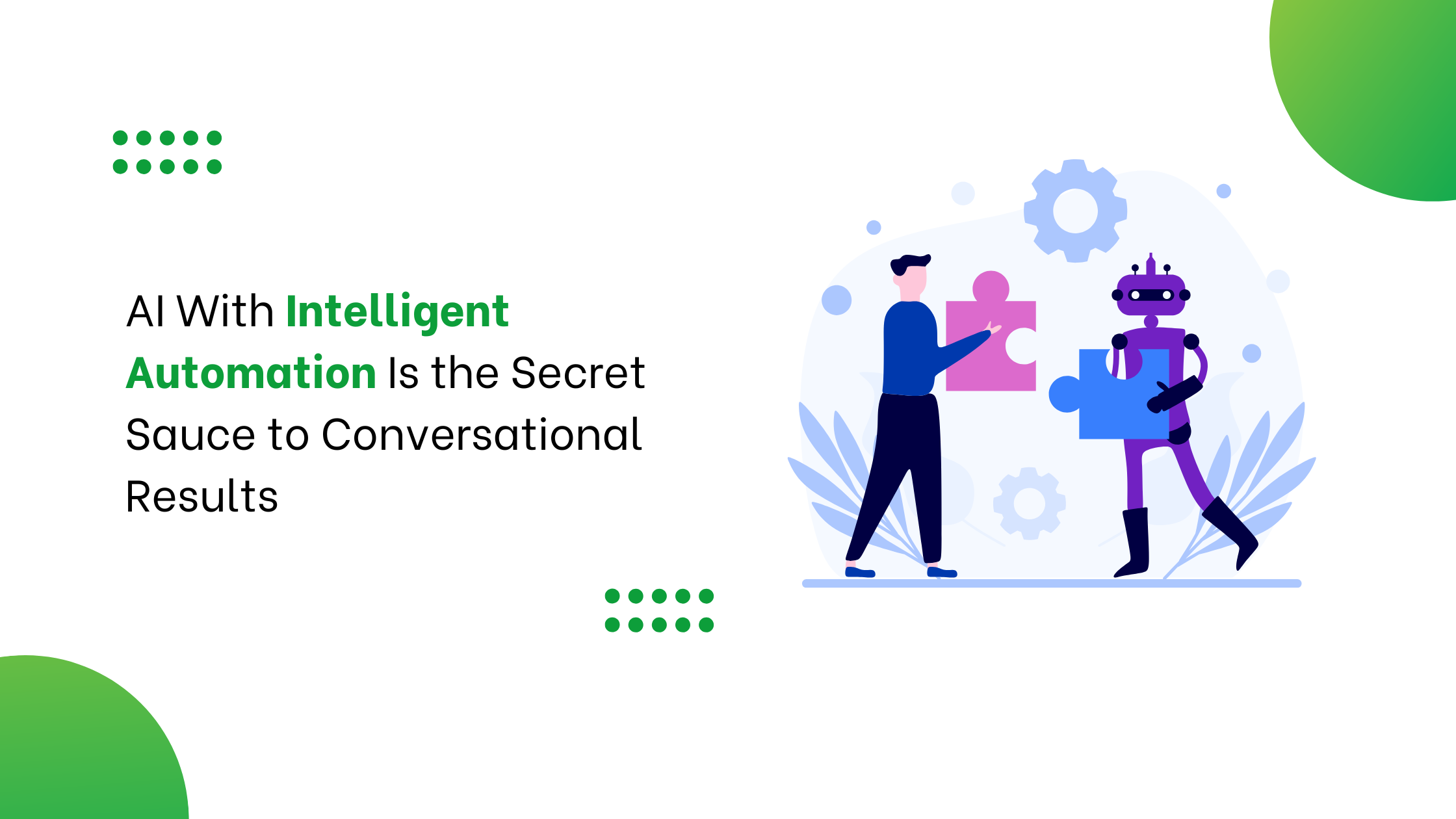The evolution of conversational AI and messaging channels has revolutionized the way brands communicate with their customers. Meta’s family of apps, i.e., Messenger, WhatsApp & Instagram, provide a massive opportunity for brands to create meaningful conversations with their customers. This has led to messaging channels becoming an integral part of every brand’s digital transformation strategy.
Over one billion people use Instagram regularly. 83% of users discover new products and services through the app, and almost half of them follow through with their purchases. It’s time for brands to create and establish their presence on the platform and shape their unique brand identity.
Messaging is an integral part of Instagram; it helps customers connect with brands through multiple avenues like feeds, stories, mentions, and DMs. The goal is to turn Instagram into a vital customer service and commerce channel for businesses of all sizes. With the introduction of the Instagram Messenger API for business, brands can manage customer communications at scale more quickly.
Messenger API is a game-changer for brands to drive more conversations, consideration, and brand preference. Consumers expect businesses to respond to their messages instantly and satisfactorily. Instagram chatbots can help businesses achieve precisely that and more.
Businesses should explore the Instagram chatbot builder to automate communications and boost sales on Instagram.
What is an Instagram Chatbot & Why do You Need One?
A chatbot doubles up as a virtual consultant that sends automated responses based on triggers such as specific keyword searches or actions. Chatbots can also send bulk messages and collect customer information, which is stored in an integrated CRM system.
Instagram chatbots can be beneficial to businesses in the following ways –
- Boost customer loyalty by providing instant answers to their queries 24/7
- Achieve an increase in sales through instant, relevant and persistent communication.
- Improve customer retention by sending relevant and helpful reminders and announcements.
- Save internal resources since businesses will not require many agents to process orders and reply to repetitive incoming messages.
How do Chatbots Help Automate Business Processes?
Let’s first talk about the basic functions that brands can assign to chatbots on Instagram:
- Answering FAQ:
Business accounts often receive direct messages containing similar questions about product availability, prices, sizes, locations, working hours, delivery times, etc. Brands can program the bot to provide options and react to specific trigger words in users’ messages, preventing the customer support executives from being overwhelmed.
- Automating the initial stages of the sales funnel:
Brands can quickly weed out unqualified leads based on their interactions with chatbots. An Instagram bot can replace an actual salesperson and close the deal if the sales funnel is small. However, a live sales team is still needed to process an order — if that’s the case, the brand can add a switch button to allow the users to connect with human sales executives.
Nevertheless, chatbots significantly help business owners save time and money by allowing their employees to provide excellent service and avoid being overwhelmed. After connecting a chatbot, the amount of work that usually takes three people can be processed by one. The bot empowered by conversational intelligence automatically processes appointment requests, reservations, and other inquiries.
- Increasing customer trust and engagement:
Instagram bots can engage with an audience and warm them up. For instance, brands can design a quiz where users answer questions to receive a desirable lead magnet at the end. Getting something valuable for free will influence the audience’s perception of the brand, boost their interest, and increase their desire to try its paid products.
Businesses can also use chatbots to provide helpful information, educate users about their brand, and share links to other resources.
- First-party customer data and hyper-personalized offers:
Instead of scouring through a customer’s order history each time the brand wants to contact them, they can set up filters and send personalized automated messages based on their interests, status, and other details.
A lot of conversational insights, customer preferences, and first-party data can be collected through conversations. This helps brands understand their users better and connect with them with content and offers that are tailor-made for them.
- Sending reminders:
Potential customers can be forgetful regarding meetings, calls, or webinars. Businesses can send gentle reminders on Instagram through a chatbot to ensure customers won’t miss key engagement and brand events. This is backed up by the fact that people spend a lot of time on social media apps and check them outside their working hours, so the chances of noticing a reminder on Instagram are high.
- Collecting feedback:
Brands can use Instagram chatbots to conduct surveys and collect feedback. Enabling post-sales conversations, delivery updates and post-sale feedback helps build a connection with the customer.
This also helps brands improve their processes and customer support through collecting timely feedback.
- Responding to brand mentions in Stories:
Instagram Stories are short-lived. Businesses need to be agile and react instantaneously when they get mentioned by their customers.
Businesses shouldn’t ignore or leave mentions unanswered. Monitoring brand mentions manually is a monotonous task that can be easily automated.
The focus should be not only on thanking customers with words, but also responding smartly and intuitively. Brands can go a step further by offering special customized discounts or other incentives to encourage new purchases and mentions.
- Using Instagram as an all-in-one communication channel:
Brands can add the “API Request” element to the message flow to extract data from another website or database and display it in a message to a subscriber.
For example, they contact the brand to learn more about a specific product, and the chatbot uses the name or inventory number of a product to retrieve the necessary information.
- Click to purchase. From Advertisement to Cart:
It can often be a tedious task for any customer to browse through various products on a company website. Instagram’s conversational commerce will assist customers in finding the products they want.
For instance, a customer finds a dress ad on her Instagram feed and clicks on the “send message” button to inquire whether the dress is available in size “M”. The bot immediately responds to the query and directly sends a payment link to help the customer complete the purchase without having to leave the app.
In addition to this, the bot can send discount coupons and offers that can incentivize the customer to purchase more than they originally intended.
- Reduce Cart Abandonment Rates:
Due to cart abandonment, e-commerce brands lose $18 billion in revenue each year. The use of an AI-powered Instagram chatbot reduces the possibility of cart abandonment since it engages with the customer, understands what they want, and retrieves relevant products that they will be interested in.
Additionally, timely and smart nudges can get the user to take action.
- Build Customer Loyalty:
A great way to differentiate brands is to create unique brand experiences. Creating a memorable customer experience leaves a lasting impression and creates loyalty for the brand. Conversational bots can send to specifically targeted customers. For example, brands can send discount coupons to customers who have spent a certain amount at the store.
- Increase Conversions:
Automation has transformed how brands engage with customers. The buyer’s journey can now be a two-way conversation so that brands can increase conversions. Conversational intelligence on Instagram can be an excellent way to provide real-time conversations that help customers with their purchases. For instance, if a customer has a query about a product, they can DM the company’s Instagram handle and get a response almost immediately. By solving the customer’s question, the customer can proceed with their purchase.
Impactful Ways to Use an Instagram Chatbot
Instagram has over a billion users worldwide. Initially, Instagram was expected to reach a billion users in 2024, but it hit the mark three years early.
Instagram has 2.5 crore business accounts out of 100 crore users, and approximately 20 crore people view a business page every day. Instagram’s rapid growth has altered how consumers interact with brands. Today, it is a standard practice for businesses to be active on Instagram, providing customer service and sharing content. It presents both possibilities and problems.
Brands must allocate resources to develop a dominant Instagram presence. To make the most of these resources, brands must take advantage of the channel’s interactive and fast-paced nature.
We will now explore how an Instagram chatbot can help brands become more resource-efficient while maximizing their account’s value:
- Providing customer service that competitors will envy:
In recent years, Instagram has become a predominant customer service platform. Managing this channel can be highly resource-intensive, often requiring a range of dedicated resources. Chatbots alleviate the pressure customer service departments face, acting as the first line of defense.
Additionally, 71% of all Instagram users are under 35 years old. Since this generation is used to dealing with chatbots, conversational AI is an excellent customer support tool for Instagram.
- Responding to repetitive inquiries:
Dealing with FAQs and repetitive inquiries is a chatbot’s bread and butter. Instagram chatbots can be trained on niche subjects, allowing them to answer a variety of complex FAQs.
A brand needs to create its FAQs and program the chatbot. The chatbot will eventually begin to recognize various query variations and spelling errors by using AI and machine learning. It may be a little daunting for some people. In reality, it’s as simple as creating a spreadsheet with a list of questions and answers.
- Guiding customers through processes:
Every brand has processes they need to guide customers through. These could be checking order status, resetting a password, or explaining how to complete a premium subscription form.
Agents are at their best when helping customers with complex or emotional issues. Machines perform best while completing repetitive processes.
An Instagram chatbot can help take care of the long-winded, repetitive processes, while human agents can focus on those customers whose queries cannot be resolved by the chatbot.
Using a chatbot’s conversational intelligence can replicate the company’s human processes, making it easy to turn every step into a chatbot conversation.
Many customer service departments have guides or help sheets to train new agents on their standard processes. An Instagram chatbot replicates those help sheets talking to customers and assisting them directly.
2. Building a memorable and exciting brand:
Chatbots are more than a simple sales or service tool for the innovative. They are a platform that may be used to portray a company as eccentric, represent a brand’s core ideas, or create trust by offering advice and support. With chatbots driven by conversational AI, there’s endless room for creativity. A single chatbot may significantly increase a business’s reach and recognition, while also working to boost brand recall. This boosts the overall success of the campaign, and the added element of user engagement helps businesses stand out from competitors.
3. Sales, sales, and more sales:
With 80% of Instagram users using Instagram to decide if it’s worth purchasing a product, brands must make the most of this potentially lucrative channel.
Chatbots provide what influencers cannot, interactive engagement. They provide answers to inquiries, put people at ease, and build enthusiasm. In short, chatbots are personal shoppers for every follower.
- Turn Instagram stories into a stable revenue source:
Instagram stories may be used to encourage direct interaction. A brand can direct message its followers using a specific term. When a follower writes this term, it will initiate a focused discussion.
This enables brands to bring their social campaigns to life and follow-up campaigns with targeted conversations. These discussions can range from delivering discount coupons to complicated, multi-branch dialogues marketing a broad range of products.
There are several strategies to enhance revenue using chatbots and Instagram stories. Here are some ideas to get you started:
- Encouraging followers to engage with flash sales.
- Create unique conversations that build interest around a product launch.
- Giving an interactive touch to a marketing effort, assisting customers to move towards conversion with the brand
- Automate social selling:
Modern customer, especially the younger generation, seeks simple purchase options. As they’re often on a mobile device, consumers don’t want to be bounced from a webpage to buy a product. When brands consider that Instagram users acknowledging the brand page make them more likely to complete impulse purchases, ensuring a seamless experience is paramount. This is where chatbots come in. Chatbots provide information about the product, recommend alternatives, and answer any customers’ questions. Following the deployment of an Instagram chatbot, a creative team may deliver a campaign that draws the eye through stories before concluding the sale through a tailored discussion.
4. Bring in leads that actually care:
The warmer the lead, the easier the sale. Chatbots warm up potential buyers by eliminating communication barriers using AI-based interactions. Before passing leads to the sales team, it’s easy to create a chatbot that:
- Pre-qualifies the lead to ensure it is worth the attention of a salesperson.
- Answers any preliminary inquiries that the customer may have, stoking their hunger and dispelling any concerns.
- Shares promotional content, thereby educating leads about a brand’s products and services.
5. Bring your ads to life:
The problem with the previous practice of following up adverts with static mediums is that the consumer might easily become disinterested. They may become preoccupied, be unable to locate the necessary knowledge, or just forget.
More forward-thinking firms are supplementing their social advertising with chatbots. After clicking on an ad, the user is taken to a chatbot conversation.
The chatbot answers any questions the user may have. It also helps make the experience more engaging, increasing the likelihood the user will buy the company products.
6. The New Cash Register: Instagram
With the growth of mobile technologies, consumer expectations are changing. On Instagram, conversational intelligence has paved the road for more direct sales pathways. Brands have begun conversing with customers to pique their attention and encourage them to take action. As more people purchase using messaging apps, marketers can leverage conversations to guide users through the buying process, allowing them to shop anywhere and at any time.
Potential Use Cases of Instagram Chatbots
Let’s take a glance at some possible use cases for Instagram message automation now that we’ve covered the basics.
- A retail/e-commerce brand allowing Instagram users to check the latest products, recover abandoned carts via notifications or let users check the delivery status.
- An insurance company allows users to book a call with a sales expert.
- A marketing influencer runs a ‘Comment to win’ discount campaign on their new course.
- An apparel brand offers coupons by Direct Message to users who mention the brand in stories and leave positive feedback.
- An electronics company is handling customer complaints with conversational AI chatbots.
Instagram Chatbots: An Opportunity for the Creatives
Instagram rewards creative efforts. Its fast-paced nature means that brands have to offer new content regularly, engage in rising topics and respond to thousands of messages. In the same way as a typical website chatbot, an Instagram chatbot helps reduce some of this workload.
Instagram chatbots are empowered with conversational intelligence that gives a brand the capability to focus on more high-value activities. It also helps to establish a brand in the follower’s minds. Memorable interactions and amusing messages can help the brand stay in the minds of followers for a long time once it has been established.
Next time a business thinks about Instagram, it must ensure to build a chatbot into the creative ideas that will offer a range of exciting avenues to explore.


